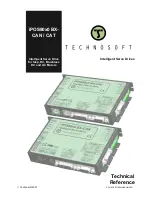
Here are the printed results when the above script is ran:
Set to remote command:
aa ·· 20 01 ·· ·· ·· ·· ·· ··
·· ·· ·· ·· ·· ·· ·· ·· ·· ··
·· ·· ·· ·· ·· cb
Response:
aa ·· 12 80 ·· ·· ·· ·· ·· ··
·· ·· ·· ·· ·· ·· ·· ·· ·· ··
·· ·· ·· ·· ·· 3c
The
·
characters represent the bytes with a value of
0x00
. This makes it easier to see the nonzero
bytes in the string.
The first byte of a command is always
0xaa
and the second byte is the address of the DC load. The
address should be set to 0. The third byte identifies the command "set to remote" and the fourth
byte is a 1, which means enable remote mode. If the fourth byte was 0, this command would set the
DC load to local mode.
The third byte of the response string is
0x12
, which means this is a packet that gives the status of
the last command sent. The fourth byte is
0x80
, which means the command completed
successfully.
On the DC load, you should see the
Rmt
annunciator turned on immediately after running the script.
You will also see the
Link
annunciator light up while communications are going on, then blink out
after a few seconds.
Press
Shift + Local
to set the DC load back to local mode.
We've learned two key things about the DC load:
1. Commands are always sent as 26 byte packets.
2. For any command you send to the DC load, you must also request the return of a 26 byte
packet. This returned packet will either be a status packet or an information packet
containing data you requested -- for example, the power level currently set.
Get in the habit of looking at the LEDs on the IT-E131 or IT-E132 interfaces. Every command you
send to the DC load should result in both the RX and TX LEDs blinking once. If this does not
happen, something is wrong with the code, interface, or instrument.
Chapter organization
The remainder of this chapter contains a reference on the syntax of DC Load commands and some
8500 DC Load Series
Version: February 4, 2009
Page 48 of 76
















































